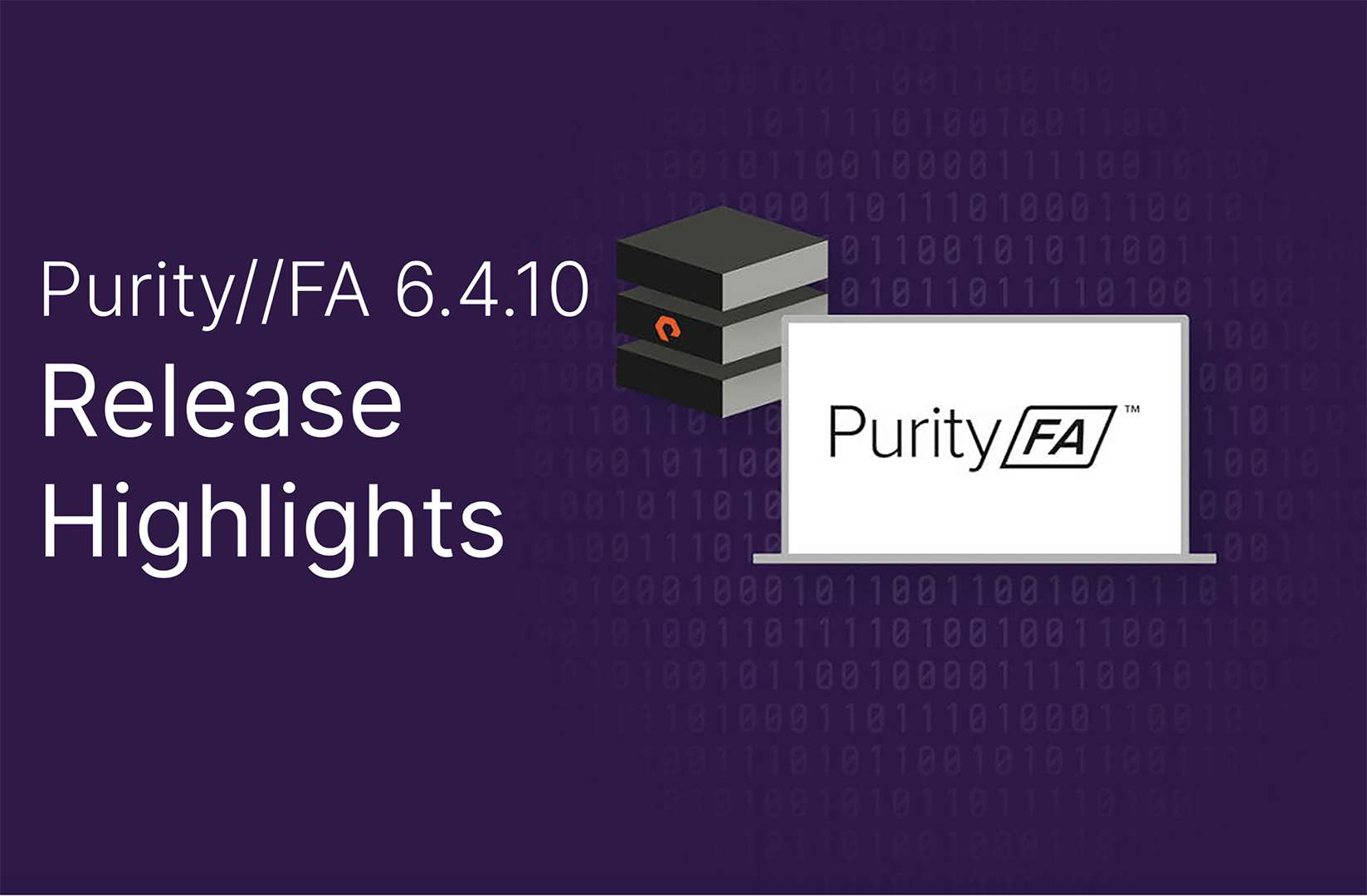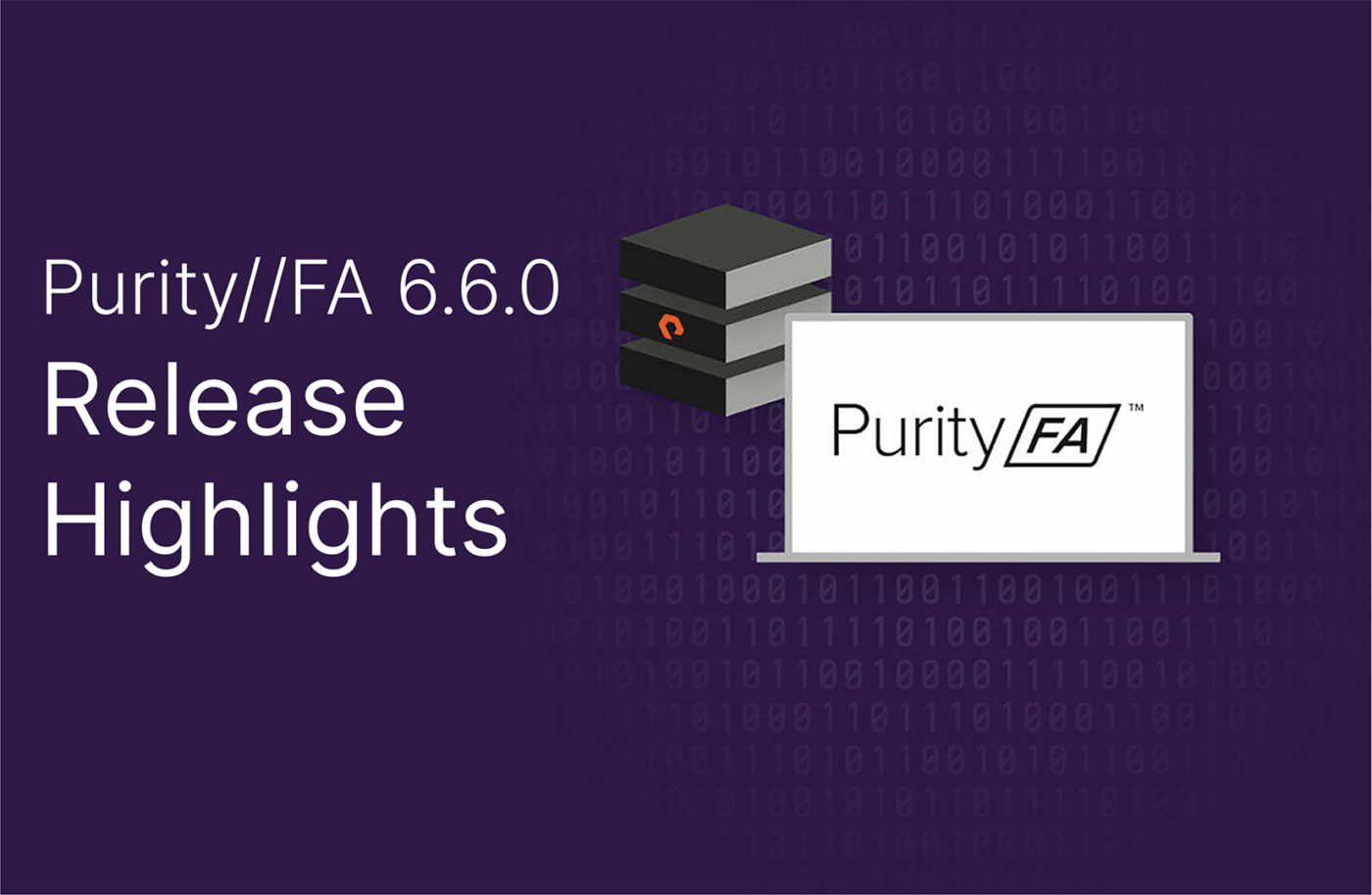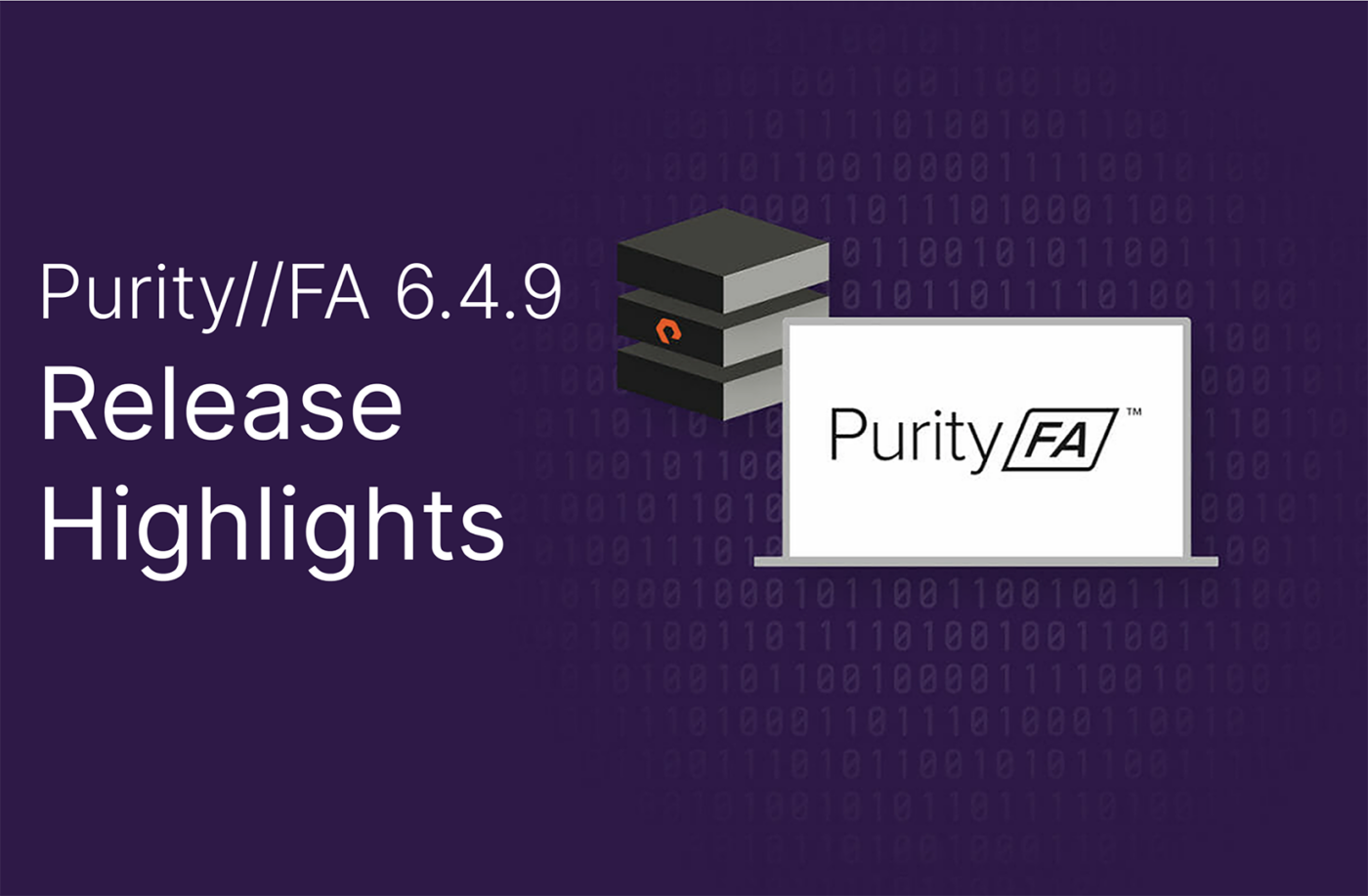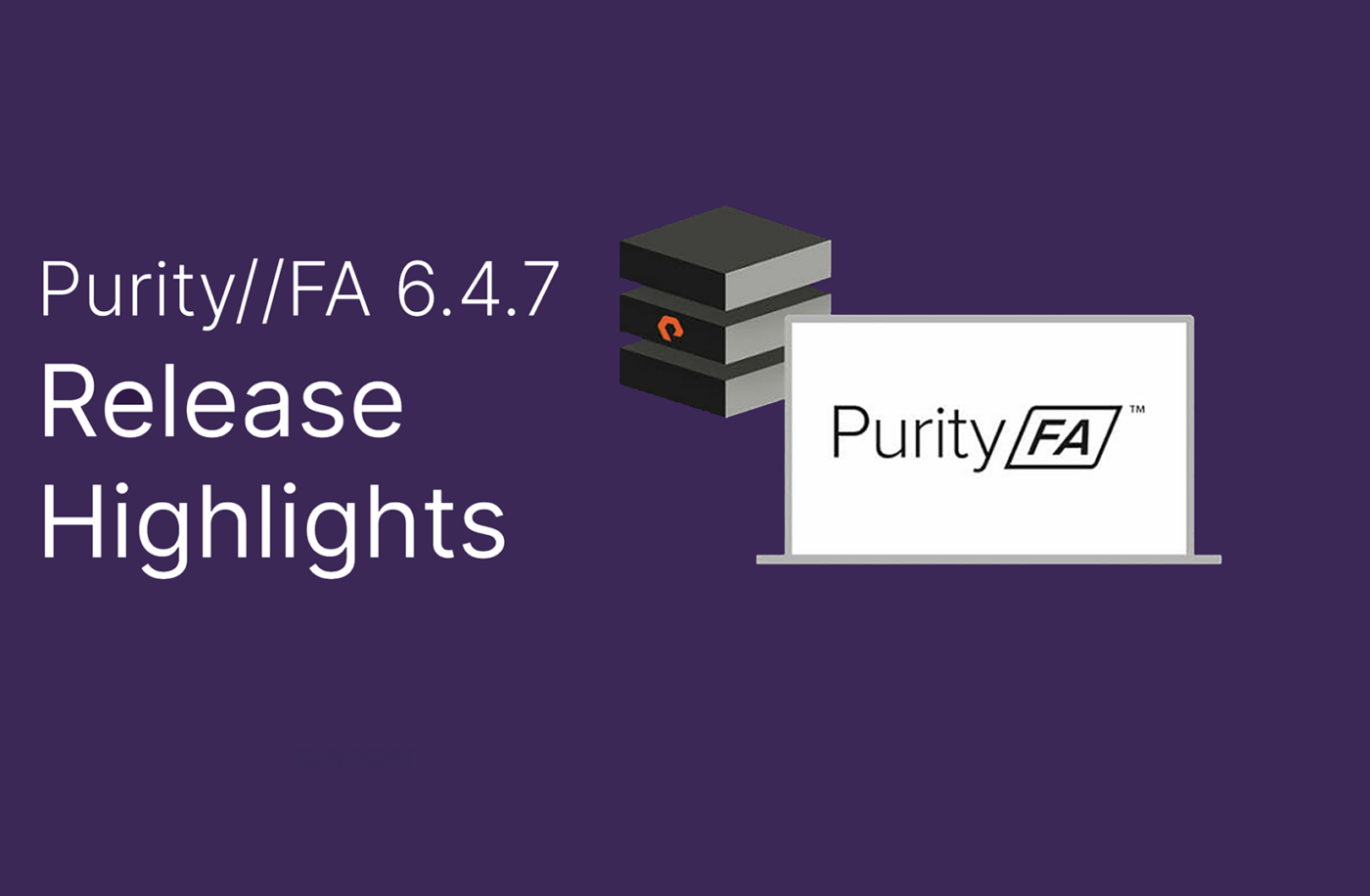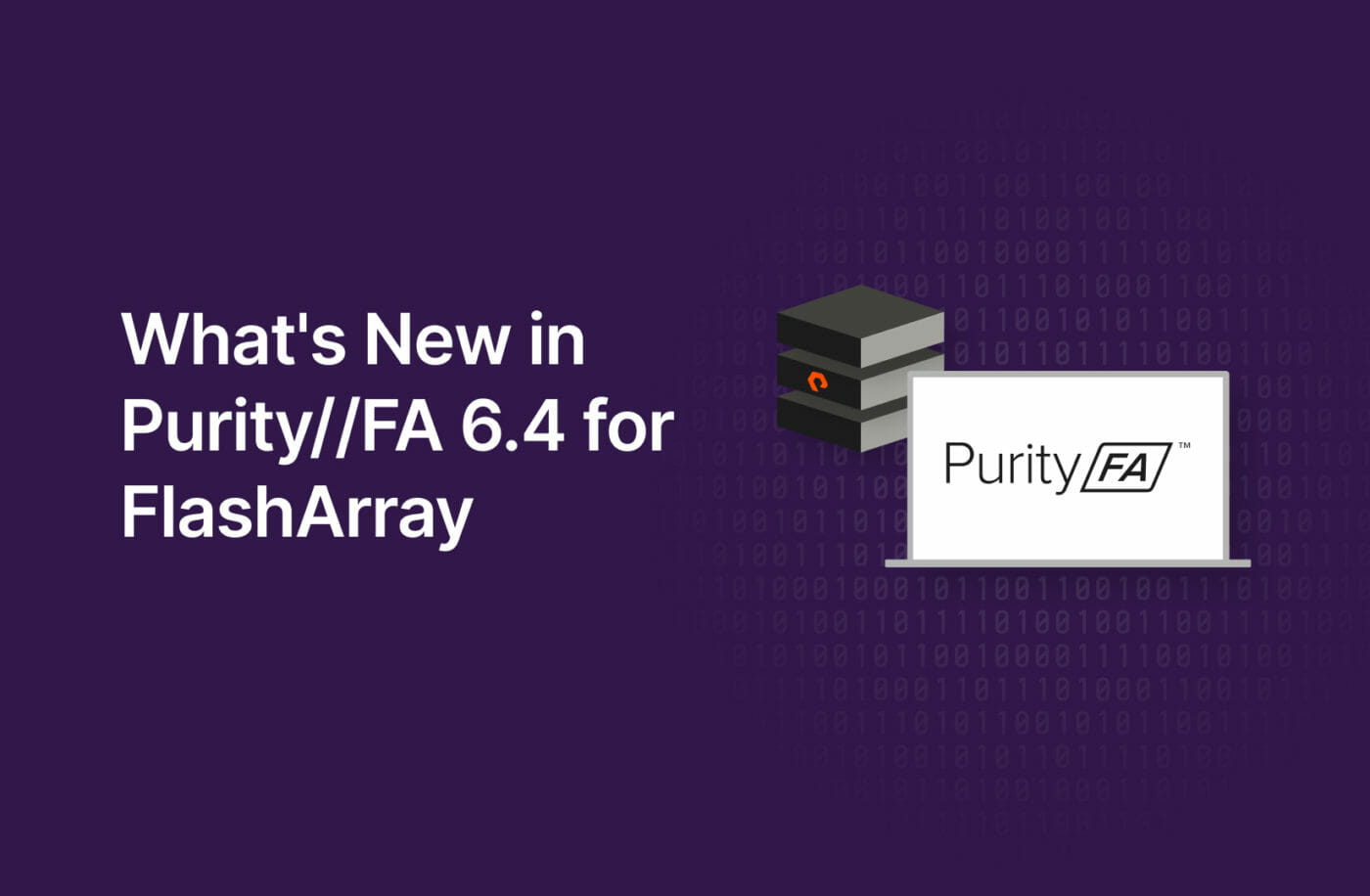It’s time for another monthly release of Purity//FA! Today, we’re happy to announce the release of Purity//FA 6.4.10 which brings NFS 4.1 support to FlashArray’s Unified Block and File services to empower more flexibility and performance for VMware vSphere NFS datastores. We’re also delivering some enhancements for ActiveWorkload and enhancing SafeMode™ to continue to help customers stay protected from ransomware attacks. Keep reading to learn more about Purity//FA 6.4.10.
Unified Block and File Adds Support for NFS 4.1
Unified Block and File has been exciting for customers who are looking to simplify their multi-protocol storage management. And, with Purity//FA 6.4.10, FlashArray™ adds support for NFS version 4.1 both as an exported protocol and as an underlying protocol for VMware vSphere NFS datastores. NFSv4.1 enhances security and reduces storage management overhead by consolidating the ports required for various services into a single port, thereby making it easier to deliver secure services behind a firewall. In addition, NFSv4.1 enables better interoperability with SMB (Windows) and NFS (UNIX) users. For more details, check out the technical blog.
ActiveWorkload Now Supports Multiple Fibre Channel Arrays
Purity//FA 6.4.10 simplifies workload mobility by expanding ActiveWorkload’s multiple synchronous connections capability to Fibre Channel (FC) environments. Customers managing storage infrastructure in FC environments may need to move workloads from one storage array to another because the storage array is overloaded, they’re looking to consolidate workloads into fewer storage arrays, or they need to refresh their storage infrastructure by retiring their existing storage array. Moving workloads across multiple arrays can become cumbersome if you have to connect and disconnect for every workload move.
Until today, a single FC-based storage array was supported with ActiveWorkload. Purity//FA 6.4.10 now leaps a few steps forward by extending ActiveWorkload—Pure’s stretched-cluster synchronous replication technology that already supports multiple synchronous connections in iSCSI environments—to FC environments. Customers can connect the source array to up to two different FC target arrays for moving workloads across them whenever needed without having to establish the connection every time, making ActiveWorkload more robust and simpler to manage.

White Paper, 7 pages
Learn What’s Helping CISOs Sleep Better at Night
And how you can too.
SafeMode Adds Eradication Timer to Further Protect Data
Pure Storage customers should feel like we have their backs. In an effort to make sure of that, we introduced SafeMode to make Purity snapshots immutable. Since then, we’ve taken additional steps to safeguard our customers’ data including turning SafeMode on by default. With Purity//FA 6.4.10, SafeMode now places newly created volumes in a SafeMode Protection Group (pgroup). This change makes it easier to manage SafeMode snapshots and enables more granular control over what data is protected with SafeMode rather than managing this setting at the array level.
In addition, we’ve introduced an eradication timer for SafeMode snapshots. Remember those bank vaults that can’t be opened on a whim because they have a timer to prevent would-be robbers from cashing in? Our SafeMode eradication timer is much like that and prevents the disabling and deletion of any snapshots that have the eradication timer disabled. So, for example, if you set your eradication timer to seven days, those snapshots cannot be deleted by any means during that window which could become a critical tool in the event of an attack. You have even less to worry about with the addition of Auto-on SafeMode.
Added Granularity for SafeMode Policies in VMware vSphere Environments
Purity//FA 6.4.9 simplified SafeMode management by adding a replication-type policy with vSphere Virtual Volumes (vVols) Storage Policy-Based Management (SPBM). Customers running virtualized workloads continue to want to control all of FlashArray via policies to ensure consistency and prevent configuration drift. Policies make it possible to manage storage at scale rather than the manual work to configure and provision storage with no simple way to ensure configuration drift does not occur. Replication-type policies allow customers to protect their VMs through SafeMode pgroups.
With Purity//FA 6.4.10, VMware administrators can now exclude certain disks from their SafeMode policy, giving them more granular control for which data is immutable. Administrators can now opt out from SafeMode protection via VMware SPBM policies that can be assigned at the VM or disk level. Prior to Purity//FA 6.4.10, customers had no choice but to enable or disable SafeMode protection across the storage array or for all vVols. An example of where administrators may not want to enable SafeMode is when they’re working with ephemeral disks that do not need such protection.
Introducing Self-service ActiveCluster
ActiveCluster™ is Pure’s active-active synchronous bi-directional replication technology that enables customers to reach zero RPO and zero RTO with FlashArray—no additional hardware or licensing required! While ActiveCluster has been relatively easy to deploy and manage, there’s a lot of complex technology beneath the surface. To ensure customers had the best possible experience enabling ActiveCluster, a support ticket was required to enable it.
With Purity//FA 6.4.10, that requirement is no longer needed. Now, customers can enable ActiveCluster on their own without needing Pure Support. However, we’re always here to help if you have questions or issues, so don’t hesitate to reach out to our team, which is one of the best support organizations in the business.
Effective Used Capacity for Evergreen//One Customers
Evergreen//One™ is our storage-as-a-service (STaaS) subscription program that takes the complexity and cost out of storage administration. By bringing a cloud operating model to on-premises, all-flash storage infrastructure, customers drastically simplify how they interact with and consume their storage.
In this release of Purity, we’re aligning the metrics you see on the array with those that apply to your Evergreen//One subscription. Now, when you log in to your FlashArray via the UI, CLI, or REST, you’ll see your Effective Used Capacity (EUC), which is the metric used to calculate your subscription billing. This metric was previously only available in Pure1®. By aligning the two, we’re able to provide a more service-oriented experience for our customers. Pure Storage still monitors the physical capacity of your array and is responsible for ensuring you don’t run out of capacity. This feature only applies to arrays that are managed under an Evergreen//One subscription.
Conclusion
Purity//FA 6.4.10 continues Pure’s promise to our customers to continuously deliver innovation and value. This release brings with it some important new features for Unified Block and File customers in addition to new safeguards with SafeMode. As with any Purity//FA release, upgrades are easy and non-disruptive, so don’t hesitate to plan your upgrades and take advantage of these new features. To learn more about the full release, please read the Release Notes.

Protect
Your Data
Learn how to keep the lifeblood of your organization secure.

Make the Move
To get this and more in Purity//FA 6.4.10, upgrade your FlashArray fleet on your schedule through the self-service upgrade in Pure1.
